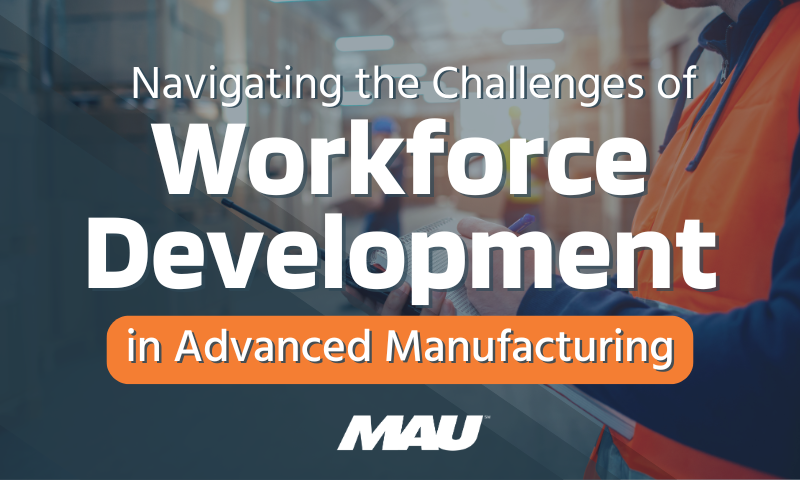It’s been splashed all over the news, written about on every blog, discussed in every newscast: the labor shortage.
Some blame it on the pandemic, others on government subsidies, and others, on the consequences of the workforce feeling overworked and underpaid.
For months, the focus has been on the labor shortage, on businesses scrambling to find qualified candidates to fill millions of vacant roles. However, in mid-2021 another crisis became apparent: “the Great Resignation.” Employees are quitting their jobs at record levels, primarily citing work-life imbalance and lack of growth opportunities, as their motivation.
The causes of the Great Resignation, or the “Turnover Tsunami,” are numerous and if businesses want to maintain a strong workforce, it’s essential to understand how employees’ values are shifting and the changes that are necessary in order to keep retention rates from plummeting.
The Pandemic’s Impact on the Workforce
It’s no secret that the pandemic had a disastrous impact on both global health and the economy. In 2021, particularly, the pandemic’s consequences on the American workforce have become startlingly clear.
In April alone, there were a reported 9.3 million job openings in the United States, one million more than there were in March.
What makes this number even more alarming is that there are 9.2 million people not participating in the workforce.
The pandemic has shined a light on several issues already present in the American workforce: wage discrepancy, lackluster benefits, work-life imbalance, and stagnation. According to the National Association of Manufacturers, employees within the manufacturing sector are demanding higher wages with better benefits, opportunities for growth, and flexibility. If employers fail to meet the changing demand, they’re looking to face a staffing crisis.
How is the Pandemic Impacting Retention, Specifically?
The pandemic has negatively influenced retention rates for a number of reasons, many of them difficult to quantify. A staggering number of employees are leaving behind their current jobs in search of something better, or for nothing at all.
Experts predict that up to 50% of employees intend to look for a new job this year. In April 2021 alone, around 4 million people quit their jobs, a record high since the Bureau of Labor Statistics began tracking voluntary job loss.
Obvious wage issues and COVID-19 fears aside, many employees cite a declining workplace culture as their motivation to quit. According to a study conducted by the Achievers Workforce Institute, “46 percent of respondents feel less connected to their company, and 42 percent say company culture has diminished since the start of the pandemic.” Additionally, many employees are finding that their job no longer aligns with their day-to-day lives and are choosing to pursue telework exclusively, or are leaving the workforce entirely.
Another factor influencing the retention rate is pent-up turnover demand. During the onset of the pandemic, significantly fewer people were quitting their jobs, only 1.9 million people in April 2020. Now that much of the pandemic chaos has ebbed and the job market has opened up, people are resuming the job searches they had put off for the last year.
If businesses want a full, successful recovery from the pandemic and all of its aftershocks, attention needs to shift from solely recruitment and attraction, to retention of the current workforce.
Why is a High Retention Rate so Important In the Manufacturing Sector?
Manufacturers are facing a skills gap that could result in 2.1 million unfilled jobs by 2030, so retaining skilled talent is critical. Maintaining a high retention rate is key to keeping costs down, morale up, and reputation high. Low retention rates can be costly for a number of reasons, and can quickly put a business in the red, so it’s important to understand what the consequence of high turnover looks like and how to mitigate them.
One of the biggest concerns with a low retention rate is the cost.
According to Gallup, replacing an employee can cost up to two times an employee’s annual salary, and that across the US, the costs associated with voluntary turnover total $1 trillion each year. When multiple employees leave in short succession, the cost for small to mid-size manufacturers can become overwhelming.
Another less measurable consequence is lost intellectual investment.
When an employee is hired, trained, and assimilated into the workforce, they are developing skills beyond what was on their resume at the time of hiring. Anything they have learned on the job, they will take with them to their next job, and potentially, to a competitor. Preserving that intellectual investment is critical to maintaining a competitive edge.
Finally, a low retention rate can significantly deplete morale, reduce productivity, and harm an organization’s reputation. Less workers mean more hours and harder shifts for those that remain, which can then cause even more voluntary turnover, due to burnout. A positive reputation for employee satisfaction boosts their ability to attract and retain top talent; a negative reputation can do the opposite.
Having a high retention rate can eliminate all of these potential consequences, and provide benefits like greater productivity, increased revenue, improved culture, and employee satisfaction.
Focusing on maintaining a high retention rate is critical for manufacturers in the current economic climate.
How Can Your Company Mitigate Impacts of the Great Resignation?
With stakes this high, it’s essential for each business to analyze the compensation and benefits they offer all employees, as well as the hiring process that attracts and retains new employees.
Understanding how your particular business hires, pays, and retains employees can help you both develop and implement an effective workforce model, to mitigate risk.
Compensating employees competitively is critical, and it’s important to know how much your company can pay candidates and what kind of benefits can be offered. By leveraging data from sources such as the BLS, Job boards, etc, you can discern where you stand within your respective market and adjust your wages and compensation when possible.
Additionally, exploring and implementing flexible workplace models can give companies an edge when significant wage increases aren’t always feasible. Offering part-time, remote, or flexible work hours can attract candidates into the funnel and keep current employees satisfied.
Click here to learn about how a part-time model can impact your company.
The hiring process isn’t easy, and neither is keeping employees motivated and engaged throughout the duration of their careers.
Having a partner in developing customized, long-term plans can not only assist in attracting fresh, skilled talent but also keep current employees growing and satisfied. From increasing wages, improving benefits, and enhancing growth opportunities, the right partner can reinvigorate your business’s workforce and ensure continuing success.
Complacency is not an option during the Great Resignation, and it’s critical that employers rise to meet the evolving needs of their employees every single day.
For more information about the changing workforce, click below to learn about the domino effect the Pandemic has triggered on today’s labor market.
{{cta(‘fef85a8c-8dc3-4579-82e8-9bc50867d713’)}}




